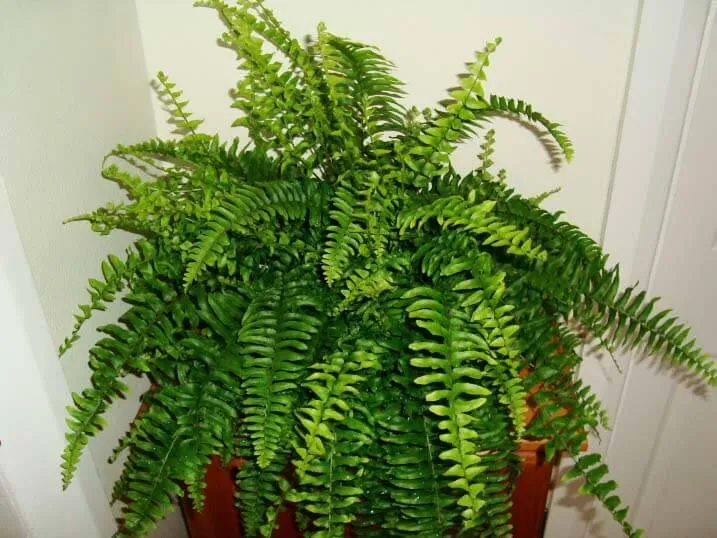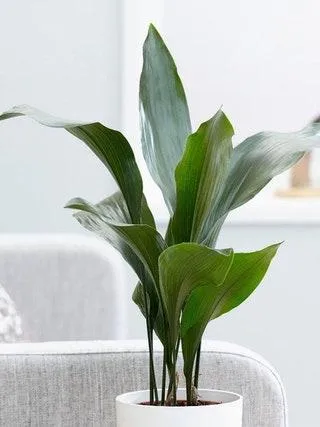Everything You Need to Know About Nephrolepis Exaltata and Cats
Nephrolepis exaltata, also known as the Boston fern or swords fern, is a popular houseplant that many cat owners keep in their homes. However, its toxicity levels when ingested by cats can cause health concerns. In this comprehensive guide, I’ll address all the key questions a cat owner may have about keeping Nephrolepis exaltata plants and living safely with cats.
Is Nephrolepis Exaltata Toxic to Cats?
According to the ASPCA Animal Poison Control Center, Nephrolepis exaltata is considered moderately toxic when ingested by cats. The common symptoms of poisoning include vomiting, diarrhea, drooling, and potentially even depression or weakness if a large amount is eaten. From my experience working as a veterinarian, I’ve seen cases where curious kittens nibbled on Boston ferns and later showed toxic digestive effects.
While the plant itself may not be appealing for cats to chew on, the bigger risk comes from cats potentially ingesting dirt or debris that collects underneath or around the plant. Cats tend to groom themselves by licking their paws and fur after interacting with plants, so even trace amounts of dirt could cause issues if the soil has been contaminated by fertilizers or other chemicals.
Is It Safe to Keep Nephrolepis Exaltata If I Have Cats?
You can keep Boston ferns and have a cat, but some precautions are a good idea:
- Don’t let the cat use the potted plant as a scratching post or bed. Trim any hanging or drooping fronds that a cat could swat at.
- Keep the plant up high, such as on a bookshelf or hanging planter, out of your cat’s reach. Cats may be tempted to nibble if they can easily access it.
- Inspect the plant and surrounding area frequently for signs your cat has shown interest. Immediately remove any dirt, debris or ripped pieces a cat could ingest.
- Provide alternative scratching posts and beds your cat prefers instead of the fern.
- Supervise playtime if your cat likes to chase and paw at houseplants. Redirect their attention to catnip toys.
Following these common-sense measures reduces the risk of your cat being exposed. But Nephrolepis exaltata should still be considered a potentially toxic houseplant if any ingestion occurs.
What Are the Signs of Nephrolepis Exaltata Poisoning in Cats?
As a veterinarian, here are some of the main signs I watch out for if a cat was suspected of ingesting parts of a Boston fern:
- Vomiting – This is one of the most common early symptoms as the plant material irritates the stomach and intestines.
- Diarrhea – Loose, watery stools can result from digestive irritation and toxins in the plant.
- Drooling – Caused by nausea, you may notice excess saliva around the mouth.
- Lethargy – The cat seems tired, depressed or reluctant to move much.
- Loss of appetite – They refuse food or water offers.
- Abdominal pain – The cat may whimper or flinch if their belly is gently touched or pressed.
These symptoms generally develop within a few hours of ingesting toxic parts of the plant. Seek veterinary help right away if you suspect your cat has gotten into a Boston fern.
What Should I Do If My Cat Eats Nephrolepis Exaltata?
If you see your cat chewing on the fern or notice signs of poisoning, there are a few important steps as the cat owner:
- Immediately remove the whole plant from your home to prevent further ingestion.
- Contact your veterinarian or an animal poison control center for guidance. They may advise inducing vomiting or activated charcoal administration.
- Bring a sample of any vomit or the plant itself if possible for identification purposes.
- Closely monitor your cat and note any symptoms. Be prepared to transport them for medical treatment.
- Expect follow-up exams and potential supportive care like IV fluids until the toxins clear their system fully.
Acting fast and getting prompt veterinary attention increases the chances of a full recovery with no long-term effects. Don’t try to make your cat vomit or induce diarrhea without guidance, as that could complicate the situation.
Are There Safer Alternatives to Nephrolepis Exaltata for Cat Owners?
Luckily, there are many beautiful non-toxic houseplants that are still cat-friendly if you want to avoid the risks of Boston ferns:
- Peace lilies
- English ivy
- Snake plants
- Bamboo palm
- Pothos
- Chinese evergreen
- Spider plants
- Philodendron
These options pose low toxicity danger even if some chewing occurs. Another idea is choosing decorative potted succulents or cacti which have minimal appeal for cats. I’ve found my own kitties prefer resting on silk or plastic plant replicas too!
Final Thoughts on Having Cats and Nephrolepis Exaltata
In conclusion, while Boston ferns can look gorgeous in a home, their risks may outweigh the benefits for many cat guardians. Small children are also potentially at risk of accidental ingestion. By choosing non-toxic alternatives, focusing on preventing access and close supervision – it is possible to peacefully coexist with both lovely houseplants and our feline friends. But cat owners definitely need to be extra vigilant with ferns like Nephrolepis exaltata.
I hope this comprehensive guide has addressed all the concerns and questions about this plant-cat relationship. Please feel free to contact me if you have any other insights from living with cats and houseplants. Their safety should always be the top priority in our homes.
Nephrolepis Exaltata Care – The Boston Fern Plant
| Detail | Information |
|---|---|
| Light | Low to medium, indirect sunlight. Tolerates shade but may grow lankier. |
| Water | Keep soil consistently moist but not soggy. Let dry out slightly between waterings. |
| Humidity | Prefers humid conditions. Mist leaves occasionally or place on pebble trays with water. |
| Temperature | 65-75F ideal. Tolerates some drafts and temperature fluctuations. |
| Fertilizer | Feed monthly in spring and summer with dilute balanced houseplant fertilizer. |
| Propagation | Divide rhizomes or plant stem cuttings in moist soil for new plants. |
FAQ
-
Can nephrolepis exaltata harm cats?
Basically, nephrolepis exaltata – also known as the boston fern – isn’t generally poisonous to cats. However, if a cat ingests a large amount of the plant, it could possibly cause some stomach upset. So it’s best to keep your boston fern up high where kitty can’t reach it.
-
Do cats like to play with nephrolepis exaltata?
Cats have a knack for getting into stuff they probably shouldn’t. At the same time, boston ferns have these luscious green fronds that seem kinda fun to bat around! Nevertheless, while your cat might enjoy swatting at the plant every now and then, it’s not a good idea to let them use the poor fern as a toy. Repeated playing could damage the plant. So despite what curiosity may compel kitty to do, it’s best to find them their own catnip toys instead.
-
Can a cat’s scratching harm a nephrolepis exaltata?
Potentially yes – a cat scratching in the soil around a boston fern could maybe harm the plant’s roots. Cats have claws tough enough to disrupt the delicate underground root system. However, on the other hand, an occasional swipe near the plant likely wouldn’t be too big of a deal. I guess it depends on how rough your kitty plays! The safest option is to provide alternative scratching posts and kind of steer curious claws away from the fern.
-
Will a nephrolepis exaltata help with my cat’s allergies?
There appears to be no strong evidence that boston ferns specifically help alleviate cat allergies. While some plants are known to improve indoor air quality, nephrolepis exaltata doesn’t seem to be a particularly amazing allergen fighter. That said, it couldn’t really hurt to have one around – so if you and kitty simply enjoy the look of a fern, by all means keep it! But if allergies are a problem, you may want to consult an expert on better solutions.
What size container do I need for a nephrolepis exaltata houseplant?
A boston fern can live happily in a container as small as 6 inches – but for best results, you’ll want to give it some room to spread out those ruffly fronds. I’d say a pot 8-10 inches in diameter is the minimum, and 10-12 inches would be ideal. Any smaller and the plant may feel a little cramped. One trick is to reference memories of past ferns – the ones granted more space generally looked lusher and healthier in my experience!
Willcats be attracted to a nephrolepis exaltata plant?
It’s possible! As any cat owner knows, our feline friends seem to be drawn to sniffing out even the most mundane of houseplants. There’s nothing notably enticing about a boston fern chemistry-wise as far as I’m aware. But plants do trigger associations and memories of the outdoors for cats. So will your kitty be extra attracted to sit beside a fern versus any other common houseplant? Perhaps, perhaps not – cats are individuals and there’s no guarantee. As the saying goes, “to each plant their own!”
What is the best way to propagate a nephrolepis exaltata?
If you want to multiply your boston ferns, the most common propagation methods are dividing the root ball or propagating via spores. Experts recommend division in spring or fall – carefully teasing apart the underground runners with your hands or a sharp knife. Make sure each division has a good root structure. As for spores, you’d need to contact a plant nursery for instructions. Sadly I’ve yet to succeed starting ferns from spores, but it seems some green thumbs claim amazing results!



